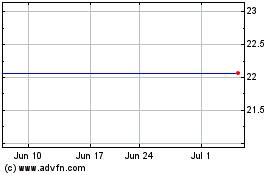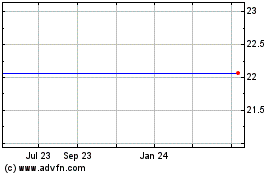Fast-fashion chains, restaurants are better at driving overall
sales and drawing shoppers
By Suzanne Kapner
At the Florida Mall in Orlando, Nordstrom was torn down and
replaced with a Dick's Sporting Goods store and a crayon-based
family attraction called the Crayola Experience.
The Saks Fifth Avenue was demolished, too, to make way for a
dining pavilion with 23 restaurants. And Lord & Taylor was
carved into space for American Girl, H&M, Forever 21 and
Zara.
Once the linchpin of American shopping malls, department stores
are being displaced by newer types of retailers that do a better
job of driving shoppers to the centers and lifting overall mall
sales.
Landlords are nudging out the once-coveted big box chains in
favor of sporting-goods retailers, fast-fashion chains,
supermarkets, gyms, restaurants, movies theaters and other types of
entertainment as they seek to keep their properties relevant in an
age increasingly dominated by online shopping.
"The definition of an anchor has changed," said Stephen
Lebovitz, the chief executive of mall owner CBL & Associates
Properties Inc. "Cheesecake Factory does as much business as Sears
used to do."
CBL subdivided a former 182,000-square-foot Sears store at the
CoolSprings Galleria in Franklin, Tenn., into smaller sections that
now house American Girl, H&M and the Cheesecake Factory.
Simon Property Group Inc., which counts the Florida Mall among
its properties, has replaced 50 department stores over the past 15
years, or about 11% of all the department stores at its centers,
with tenants that include Primark, Target Corp. and Forever 21
Inc.
"The dependence of malls on department stores isn't what it was
25 years ago," said Sandeep Mathrani, CEO of another big mall owner
General Growth Properties Inc.
Since 2011, General Growth has taken back space from 65
department stores, or about 15% of its anchors, and filled the
locations with new occupants that include H&M Hennes &
Maurtiz AB, 24 Hour Fitness, Wegmans Food Markets Inc., Dave &
Buster's and other restaurants.
Malls were once so reliant on department stores that some of the
earliest shopping centers were built by the retailers. A
predecessor of Dayton-Hudson Corp., which operated department
stores before selling them and changing its name to Target Corp.,
is credited with building the first enclosed shopping mall in the
suburbs of Minneapolis in 1956.
Mall development was often contingent on securing department
stores as anchors in the hopes their prestige would attract other
tenants and, eventually, shoppers. As a result, department stores
either owned their mall stores outright, or paid little rent,
real-estate executives said.
But as storied chains such as Bonwit Teller & Co. went out
of business and others such as the May Department Stores Co. were
acquired by rivals, the pool shrunk.
At their peak in the 1980s, there were 56 department store
nameplates, Mr. Mathrani reckons. Today, the number has dwindled to
roughly a dozen.
The remaining chains have closed hundreds of stores in recent
years, as they grapple with online competition from Amazon.com Inc.
and changing consumer tastes that have made department stores seem
antiquated.
At General Growth malls, department store sales fell 1.9% for
the 12 months through March, compared with a 4% increase at the
specialty stores that line its malls. From 2005 to 2015 the
disparity was even starker, with department stores sales dropping
10% compared with a 33% rise in specialty store sales.
Mall department stores aren't dead, however. At 229 malls that
real-estate tracking company CoStar Group Inc. examined over the
past decade, one department store brand replaced another in 46% of
anchor space that turned over.
But the remainder of that space, or nearly 54%, went to
non-department store occupants such as food, home furnishings and
sporting goods.
Redeveloping anchor space comes at a cost to landlords, but
holds the promise of hefty returns as department stores paying as
little as $2 a square foot in rent are replaced by new anchors
paying $15 to $20 a square foot, real-estate executives said. If
the space is carved into smaller parcels for specialty retailers,
rent can approach $100 a square foot.
At the same time, the new, more productive tenants help lift
sales at the overall mall by pulling in more shoppers, the
executives said.
CBL spent $32.8 million on its share of the redevelopment of
CoolSprings, which it owns with pension fund TIAA-CREF, according
to a presentation it prepared for investors. The mall's sales per
square foot rose 15% to $543 in 2015, the year the remodeled Sears
space opened, from the year before.
Dick's Sporting Goods Inc. has been snapping up space formerly
occupied by department stores. "Penney, Kohl's, Sears, Macy's, a
few of them have announced store closings, there's going to be real
estate out there," Dick's CEO Ed Stack told analysts in May.
Department stores aren't closing locations fast enough,
according to research firm Green Street Advisors, which estimates
that the chains would need to shutter roughly 800 stores, or about
a fifth of mall anchor space, to regain the sales per square foot
they had a decade ago.
Many department stores have long-term leases with multiple
renewal options at below-market rents, which enables marginal
stores to continue to operate for years.
For instance, more than half of Sears Holdings Corp.'s leases
expire in less than five years, but it has renewal options for the
next quarter-century, according to its financial filings.
Sears Holdings pays $4.29 a square foot in rent on stores that
are part of the Seritage Growth Properties real-estate investment
trust it set up last year, according to John Kernan, an analyst
with Cowen & Co. and a Seritage investor presentation. That
compares with other Seritage tenants that pay $12 to $24 a square
foot.
"Landlords have tried to be more active in buying back space,"
said DJ Busch, a senior Green Street analyst, "but there is a big
gap in what they are willing to pay and what department stores are
asking."
Write to Suzanne Kapner at Suzanne.Kapner@wsj.com
(END) Dow Jones Newswires
July 11, 2016 02:48 ET (06:48 GMT)
Copyright (c) 2016 Dow Jones & Company, Inc.
GGP Inc. (NYSE:GGP)
Historical Stock Chart
From Mar 2024 to Apr 2024

GGP Inc. (NYSE:GGP)
Historical Stock Chart
From Apr 2023 to Apr 2024
